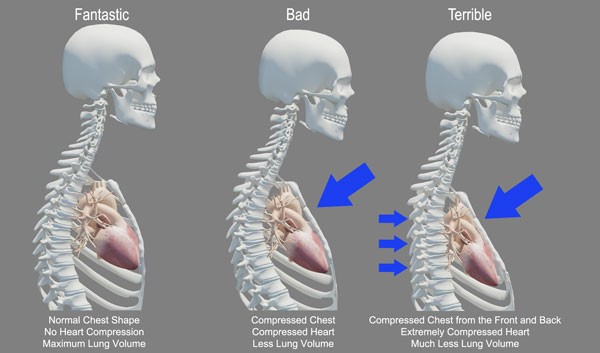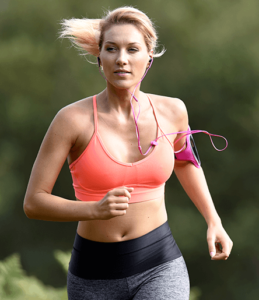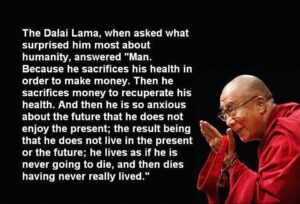Personal Training Success Story Santa Fe- Rosanna Dill
We have a running joke in the midday class. At about 12:32 Rosanna is going to come screeching in with her workout gear and high heels. She’ll start warming up and be told what the class is that day (no matter what it is) and genially say with a huge smile on her face, “Great, let’s do it!”
Rosanna has one of those minds that likes to figure things out. She is very inquisitive and will generally figure things out on her own. This shows up at home as she is the “handyman” of her family and is pretty successful at it. So she applied the same gusto to her fitness program and got ok results. The problem was that she noticed that her “problem areas” weren’t getting better and in fact getting a little worse. She has what 90% of people have in a thoracic kyphosis. This is a tight upper back that is more rounded than it should be.
Her main goal now was to not be the “hunched back little old woman” so she decided to stop “being a cheap bastard” (her words 😉 ) and sought help. Rosanna saw us on Facebook and read a little on what we do and it really peaked her interest. She decided to commit and work on fixing her upper back by joining our group class.
She jumped in with two feet and worked her tail off. She did all the homework that was given to her and some that wasn’t. Because of this she has drastically improved her posture and is learning tools so to never become the hunched back little old woman. This is also why Rosanna is October’s Member of the Month.
1) What made you decide you wanted/needed to start a program?
I did not want to become that little old woman with the hunched back.
2) What did you do before?
I took Pilates at a gym for a bit until a dog bit me (long story). I am active and do outdoor activities. Most recently, I was doing an at home DVD workout program that has me doing different stuff every day.
3) What results have you achieved since starting your program that you are proud of?
I have so much more awareness in my body. I have much more freedom in my body and I can see my tight upper back slowly going away.
4) Do you have a favorite exercise? Least? What do you like or don’t like about them?
I like all the exercises. I know that they are all helping me and I can feel it. I really enjoy how all the exercises work together in the program. The wall stretch helps me sleep at night and the handful of upper back exercises are really starting to strengthen me.
5) What are some challenges or goals you are currently working on?
Just continuing to open up my upper back. It’s like you said, I am working on the past imbalances in my body and what I am doing to myself now.
6) What do you like best about our program/having a trainer?
I love the fact that the classes are varied, fun and effective.
7) What advice would you give to the other SolCore Fitness members?
Take your time. It is a process to getting results. You are not going to get major results in three months and definitely not in 6 weeks like other programs promise. Stick with it because it is totally worth it.
8) What would you say to someone on the fence about joining our program?
This program is a subtle yet effective practice that realigns your body.
Find out more @



